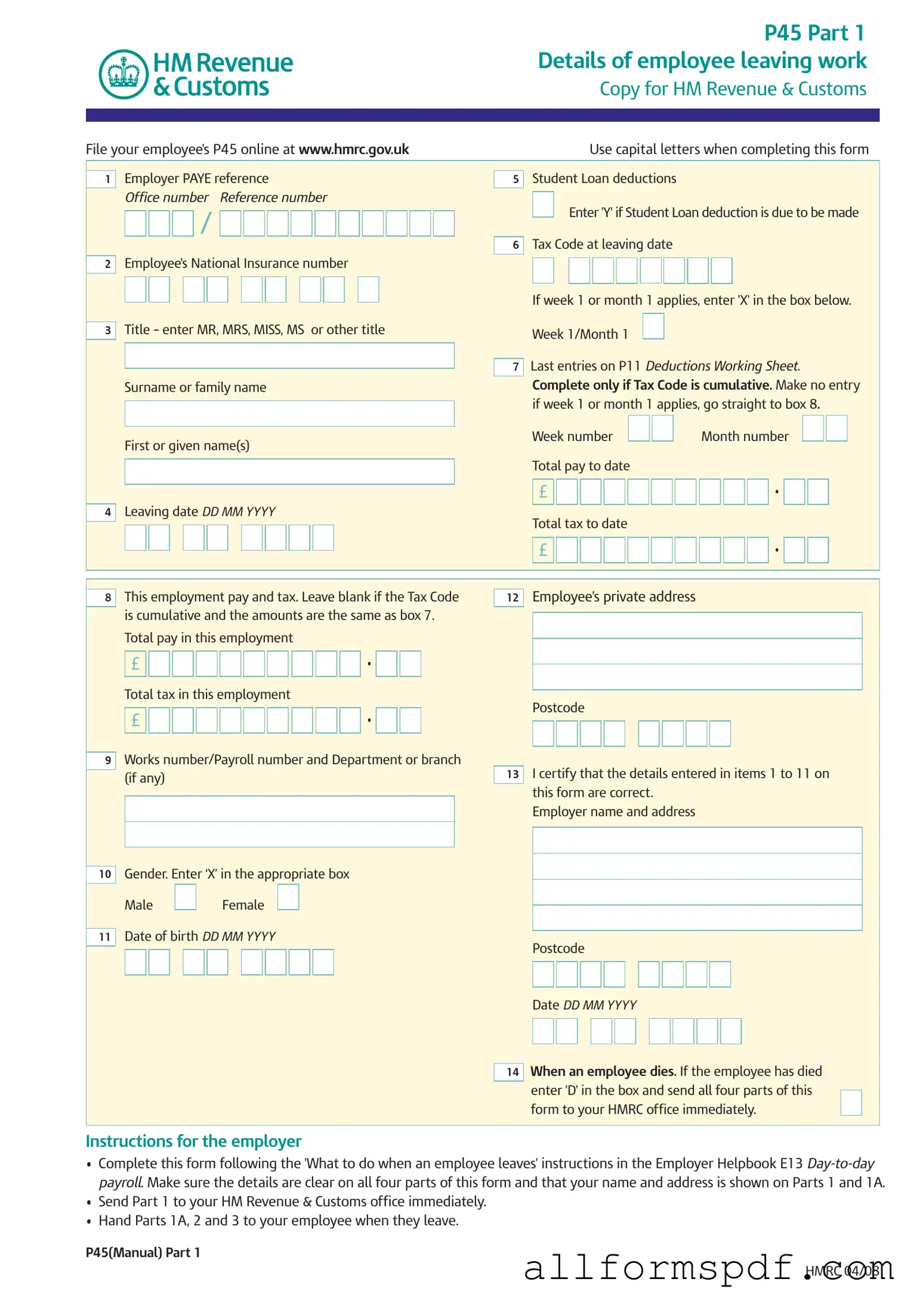Misconception 1: The P45 form is only necessary for tax purposes.
While the P45 does play a significant role in tax calculations, it also serves other important functions. For example, it helps new employers understand an employee's previous pay and tax deductions. This information is crucial for ensuring the correct tax code is applied in the new job.
Misconception 2: Employees do not need to keep their P45 once they start a new job.
Many people believe that once they hand over their P45 to their new employer, they no longer need it. This is not true. Employees should keep their P45, especially Part 1A, as it may be needed for future tax returns or to claim tax refunds.
Misconception 3: The P45 form is the same for every employee.
This is misleading. The P45 form can vary based on the employee's specific situation, such as whether they are on a week 1 or month 1 tax code. Each form is tailored to reflect the individual's pay, tax deductions, and other relevant details.
Misconception 4: Employers can delay sending the P45 to HMRC.
Some employers think they can wait to send the P45 to HMRC after processing other payroll tasks. However, they must send Part 1 of the P45 immediately after the employee leaves. Timely submission helps ensure that tax records are accurate and up to date.
